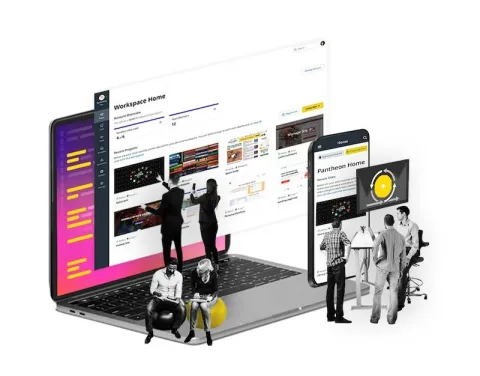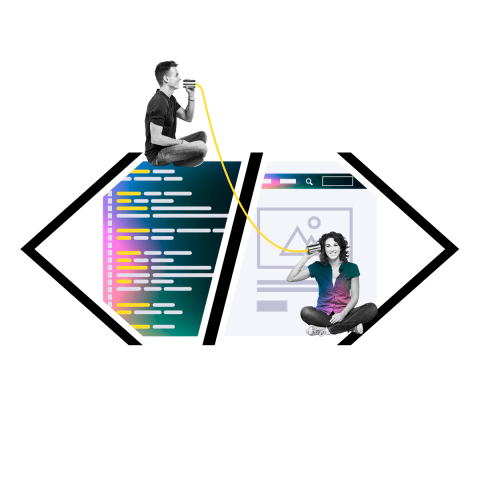Website Personalization Has Never Been More Important
Image

Consumers want a personalized shopping experience. Here are three steps to getting started with website personalization.
It shouldn’t come as a surprise that COVID-19 triggered a spike in online sales. North America alone, saw a 52% year-over-year increase in e-commerce orders from March 22 to April 4. While this represents a growth in reach for many retailers, it also poses several problems.
Aside from new operational pressures to fulfill orders, online merchants aren’t always equipped to provide shopping experiences that meet the standards of today’s consumers—even during a lockdown. Customers now expect personalization to the point that 74% of them grow frustrated when website content isn’t personalized to their preferences.
As soon as consumers become actual customers, they expect to be treated differently—including how you communicate with them. A website customized to a visitor’s preferences can immediately make them more open to the contents of the page.
Tailoring the Customer Journey
Though the customer journey is rarely linear and varies from person to person, most touchpoints can benefit from personalization. First impressions count, of course, and you should be looking for ways to make consumers feel like you recognize their needs from the moment they hit your website. Even if it’s more generalized personalization, the gesture can mean the difference between a sale and a bounce.
Once a consumer becomes a customer, personalization gets a bit easier. Obviously, you can offer status updates on orders and accounts, highlight past purchases, and make data-driven recommendations. In the retail world, 46% of consumers will turn to Amazon if you fail to provide relevant product suggestions on your website. And by all means, don’t make the mistake of automating requests for customer reviews—should someone return a product or cancel a subscription, it’s like asking people to air their complaints and grievances publicly.
Every interaction your brand has with customers should be plotted out to the nth degree. You should know when to reach out—and when to go silent. You should know which message to send to which customers and on which channels. No matter the size of your business, people expect a certain level of personalization. Not specifying the experience to their preferences could enable competitors to sweep in and give them what they’re looking for in a brand.
Making the Experience Personal
According to one study, 96% of marketers believe personalization is key to customer loyalty and retention. Going out of your way to recognize customers adds an element of service that turns the average shopper into an enthusiastic devotee, which is why a brand website is a perfect platform to meet your customer personalization needs.
With that in mind, here are some areas to focus on first when personalizing a website:
1. Experiment small
Personalization is complex, requiring trial and error across dozens of variables to get it right. Break down more extensive plans into concise and measurable tasks, moving quickly to validate theories and use results to inform future tests.
Consider leveraging a tool like Optimizely or VWO to experiment with personalization and engagement throughout the entire customer experience. Keep what’s working and modify what’s not—and do it without overhauling your website or mobile apps. You’ll eventually scale your efforts across multiple pages and touchpoints to arrive at a truly personalized experience.
2. Use IP addresses
If you register visitors or sell products online, you can collect data to greet customers and showcase relevant content on your website. For those unknown to you, the options are somewhat limited. One solution is to leverage IP addresses for general visitor observations, like language preferences or time of day.
Remember, however, that IP addresses are dynamic—and users move from one to another based on locale. Everyone in that Starbucks down the street will share the same IP address. It’s not the most accurate way of collecting consumer data, but it can help personalize the experience for the average shopper.
3. Define marketing measurements
Let’s say you want to personalize a tagline on your homepage to enhance the customer experience. How will you prove the change did anything for business? Will you rely on purchase behavior? Average session duration? Bounce rate?
Decide on a set of trackable elements to quantify the impact of your idea. Then, after settling on a set of metrics, pay attention to data quality and data integration. You need deep, well-integrated datasets to formulate accurate conclusions about any change made to personalize the experience.
Personalizing a website is only the first step. After all, customers will come to expect this level of personalization with each subsequent brand interaction. Not going beyond recommendations based on past browsing behaviors can leave every other brand experience disconnected from the one preceding it.


